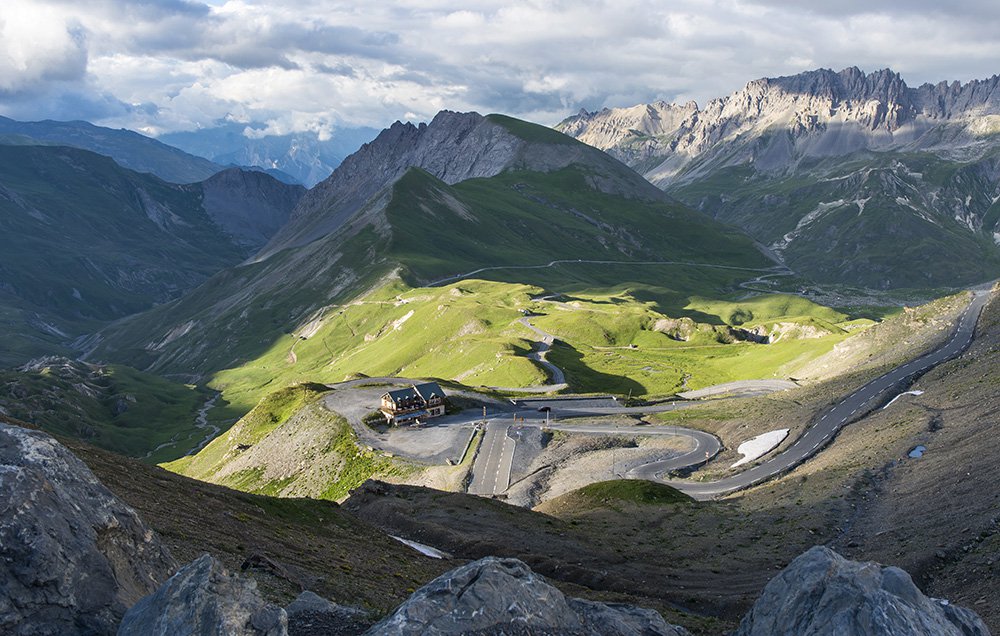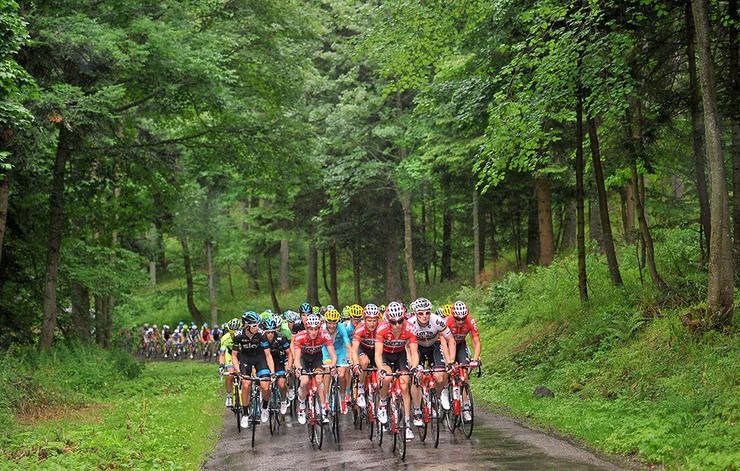The 10 Toughest Climbs of the 2017 Tour de France
Here are the craziest ascents you can expect out of the 2017 Tour.
Here are the craziest ascents you can expect out of the 2017 Tour. – By Whit Yott

Located in the mountainous Vosges region of northeastern France, the La Planche des Belles Filles is rather short at about 6km. But it’s steep enough to do some damage – especially the final 20% ramp to the finish line. Case in point: the climb has only appeared in two Tours de France, but it’s made an impact on both occasions. In 2012, Team Sky’s Chris Froome won the stage to mark the climb’s first appearance. His teammate, Bradley Wiggins, took the yellow jersey that day and held it all the way to Paris. Back again in 2014, Italy’s Vincenzo Nibali (then riding for Astana), took his second stage victory of the that year’s Tour at the summit. He won two more stages that year – and the Tour. So keep an eye on whichever rider wins Stage 5; he might be the rider who goes on to win the Tour.

A newcomer to the Tour de France, the 10.5km Col de la Biche will certainly leaves its mark. The Hors Categorie ascent begins “officially” in Gignez, but the road starts going up about 2km before the town. The first 5km are the steepest, with grades hovering around 11%. As an added blow to the morale of a peloton that will cover seven categorised climbs through the mountainous Jura region during Stage 9, the “summit” is a false one. While King of the Mountains points will be awarded at the Croix de Famban, the true summit of the Col comes 2km later. A stunning view of the Alps to the east awaits them at the top – not that the riders will have time to stop and soak it in.

There’s a club of riders who live near this climb in the Jura region called the “Confrérie des Fêlés du Grand Colombier,” which basically means “The Insane Brotherhood of the Grand Colombier.” To join you simply have to ascend the mountain’s four main routes in a single day – not an easy task. The Tour only climbs one of them this year (last year it covered two), but for the first time in its history, this year’s race tackles the worst of them all. The climb begins in Virieu-le-Petit and as soon as the riders leave the small town, the going gets steep. Really. Steep. For about 3km the road won’t dip below a 12% grade, including one ramp that hits a whopping 22%. This climb – and the two other Hors Categorie ascents on tap during Stage 9 – will have many riders asking their mechanics for compact gearing.

HC – 17.7km @ 6.9%; 2642m
The Tour de France climbed its first 2,000+m ascent, the Pyrenean Col du Tourmalet, in 1909. The riders hated it, but Tour founder Henri Desgrange didn’t care. He responded by introducing the Col du Galibier, an Alpine pass more than half a kilometre taller than the Tourmalet, the following year. It’s been a Tour icon ever since. This year, the riders will climb it from the north, via the Col de Télégraphe. After summiting the Télégraphe, they’ll descend 5km into Valloire, at which point the road will immediately start going up again. The first 10 of the Galibier’s 18km climb gradually, but once the race hits Plan Lachat, 8km from the summit, the going gets really tough – and the last 2km are the steepest. To add insult to injury, the Galibier actually got taller in the 1970s, when a tunnel was closed for repairs and a road was constructed that climbed above it as a detour. That road remains as the route the riders must take, making the Galibier even longer and higher than Desgrange first intended. Fittingly, a monument to Desgrange was erected near the top of the climb, and each year a special cash prize is awarded in his honour to the first rider over the top of the highest summit in that year’s Tour. This year, that climb is (You guessed it!) the Galibier.

2. Stage 9 – Mont du Chat
HC – 8.7km @ 10.3%; 1504m
It’s hard to see any climb getting the better of a rider like Eddy Merckx, but the Jura’s Mont du Chat is something special. The only climb in this year’s Tour with a double-digit average gradient (10.5%), it literally never lets up. With nowhere to recover and pitches of 14 and 15% between kilometres 4 and 5 the climb is simply a beast.This is only the climb’s second Tour de France appearance. In 1974, wearing the yellow jersey at the time Merckx was dropped by France’s Raymond Poulidor, his closest challenger. By the summit, Merckx found himself over a minute behind the Frenchman, and almost two minutes adrift of the lone leader, Spain’s Gonzalo Aja. Merckx had no choice but to take all sorts of risks on the twisty, treacherous descent. He caught both Poulidor and Aja to win the stage and defend his jersey.

1. Stage 18 – Col d’Izoard
HC – 14.1km @ 7.3%; 2360m
In recent years, the Tour de France has chosen one legendary climb to honour during the Tour’s final week. Sometimes they’ll climb it more than once; other times they’ll make it the final ascent of the race and therefore a key strategic moment. This year, they’ve chosen the Hors Categorie Col d’Izoard. The Izoard has featured in many key Tour de France moments, launching legends such as Fausto Coppi, Louison Bobet, and Eddy Merckx to overall victories. (Monuments to Coppi and Bobet have since been erected on the climb.) Coming from the south, the first half of the climb isn’t too bad, despite the looming presence of the rocky summit hovering high above. But the final 7km are quite steep (a steady grade of about 10%) making this one of the most brutal climbs in the Alps. And the scenery only adds to the misery. With about 3km still to climb the riders enter the Caisse Déserte, a barren landscape that looks like more like the surface of the moon than the French Alps. Boulders, fields of scree, and towers of rock litter the side of the mountain, making the Izoard the setting of many of the iconic black and white photos of suffering riders from “back in the day.” The Izoard has been climbed 34 times before this year, and on 11 occasions the rider who was first over the top went on to win the Tour de France. As the final summit finish of the 2017 Tour, it could happen again.
READ MORE ON: international road tdf Tour de France





 7. Stage 13 – Mur de Péguère
7. Stage 13 – Mur de Péguère